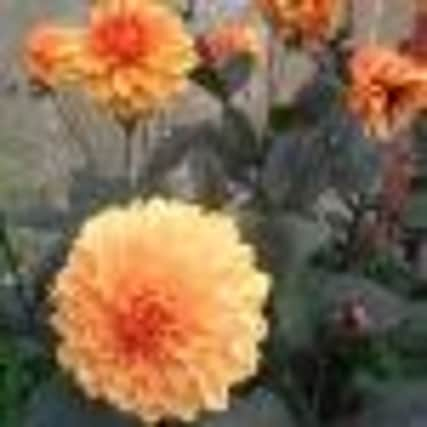Dahlias are looking delightful


The wildflowers are causing a buzz with our visitors and the bees, especially the ones planted on the lower lawns where the Medieval Jousts took place, I was delighted to watch some of the younger children carefully choosing and collecting the fallen petals as the wind blew them along the grass, they were clearly enjoying all the different colours and types of flower petals.
The Dahlias are looking beautiful at the moment, they’re in full bloom throughout the gardens, some of the varieties are ‘David Howard’ - dark leaves, double apricot-orange flowers, ‘Bishop of Llandaff’ - coppery purple leaves, single dark red flowers, ‘Bishop of Auckland’ - vermillion semi-double flowers, blackish leaves and the wonderful ‘Café au Lait’ - large sumptuous soft pink with mocha overtones found in the Fitzalan Chapel garden and the English Herbaceous Borders within the walled garden.
Advertisement
Hide AdAdvertisement
Hide AdThe Dahlia is the national flower of Mexico and was originally cultivated by the ancient Aztecs. They grow in the mountain regions of Mexico and Guatemala and have been used for countless generations.
The Tree Dahlia (Dahlia. Imperialis), which we have here at Arundel Castle, are open centered with single blooms with hollow stems which can grown up to 20 feet or more, they were used for hauling water and also as a source of water for Aztec hunters - they called them “Acocotli” meaning water cane. Dahlia takes its name from the Swedish botanist Dr. Anders Dahl. In the 16th century the Spanish conquistadors’, apart from conquering the Aztecs, also brought with them botanists, whose job it was to bring back plants from the “New Word” for Spain.
Other star plants to look out for are the ‘Giant Canna Lilies’ (Iridiflora) - with their stunning flower heads and large foliage. Kniphofia uvaria Nobilis (red hot poker) with its deep orange flowers. Cosmos is flowering in abundance, normally thought to be a South African plant as its found wild throughout South Africa and up to Zimbabwe, Mozambique and Botswana. The seeds were brought to Europe from South Africa, however Cosmos is in fact originally from South America and was accidently introduced to South Africa during the 19th century, and it was transported across the Atlantic from South America with the grain ships, then self-seeded naturally throughout southern Africa.
Tips from the castle garden team:
Harvest your homegrown fruits, vegetables and herbs, we are harvesting our wonderful fan trained pears and apples at the moment!
Trim Lavender lightly
Cut back any collapsed or spread perennials.
Advertisement
Hide AdAdvertisement
Hide AdThis is a good time to start your autumn and winter vegetables. Ideally by planting green onions, carrots, beets, lettuce, spinach, radishes, and winter cauliflower directly into the ground.
Happy Gardening!
Arundel Festival starts on the 19th August until Bank Holiday Monday, August 29. Here at Arundel Castle we are hosting a great Concert and Opera in the Barons Hall (22nd & 23rd August) and within the Collector Earl’s Garden the GB Theatre Company will be performing Romeo and Juliet and Twelfth Night (25th & 26th August).
For full ticket, booking and garden tour details visit the castle website at www.arundelcastle.org or the Arundel Festival website www.arundelfestival.co.uk.